This week I’m sharing progress on a shady woodland garden. This is in an area of my garden with untapped potential for growing shade-loving woodland themed plants. Tucked in an area between the main garden and a my neighbour’s boundary is this shady area. One of my very first blog posts for Six on Saturday described my ambitions for this area and if you want to see what it looked like back then click here.
A bit of soil prep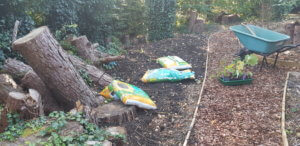
Early this summer I spent a bit of money with a contractor to build a wood chip path through the woodland area. He also helped me to stack logs from a felled larch to provide a backdrop for woodland plants, ferns and the like. Since then I have achieved nothing here except a small amount of weed clearance. Plants I picked up for the area have languished unplanted.
There were good reasons not to rush in here. I needed to check how dry the area was so that I could make informed plant choices. Woodland shade isn’t always damp, in fact where there are large trees around -as here – the soil is often dry, since moisture is sucked up by the tree roots. I also needed to get on top of some of the perennial weeds – nettles, brambles, and ivy. There is still work to do but this small area to the left of the path has been weed free for a few weeks and so I decided to get some plants in. I’m trying to go peat free so I used my remaining three bags of non peat free compost to prep the soil a bit more and turned myself to the exciting task of planting.
Gunnera manicata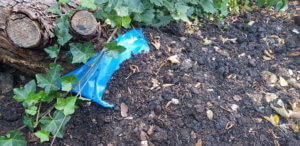
Don’t get excited – I haven’t got a gunnera in the garden yet but I have spent the summer deciding if there’s mileage in investing in some. I love gunneras, the majestic size of the leaves and an almost tropical lushness whilst also being tough as old boots. They do, however, need a bit of moisture at the roots and I wanted to make sure that this area wasn’t going to be too dry. I decided to put plastic sheeting down (shown blue in the picture above) to help water retention. The soil level could then be built up on top of it and I used the spoil from digging the pond for this purpose – a lovely claggy clay soil that should also retain a bit of moisture.
I monitored the moisture levels over the summer. I didn’t do this with a water meter but I was able to feel moisture here with my hand yesterday, despite several weeks with no rain. I’m confident the gunneras will be OK here so I’ve placed an order.
Here’s a lovely shot of some huge gunneras at RHS Wisley taken at least ten years ago. They dwarf my little girls. I hope you can see why I want some of these stately plants in my garden.
Hostas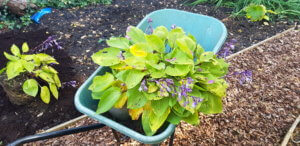
As you can probably see, this is quite a large area to fill and having splurged on the gunneras I need to be careful how much money I spend filling it up. Luckily I had some hostas in pots just waiting for a new home. These were split from a large clump three years ago and they now desperately needed splitting again and to get their roots in the soil.
I wish I knew the name of this hosta. The original plant was not labelled but it is an interesting one with burgundy red stalks and a small amount of burgundy speckling on the leaf near the stalk. By shoving a spade through the clumps I was able to fill this area pretty well and it should look great here in this large cluster next year. Let’s just hope the slugs stay away.
Iris siberica
I’ve got lots of this Iris in the garden and many large clumps that need splitting. They do well in sun but also in shadier parts of my garden so this area is good to house a few.
Like the hostas I have decided to plant these in a huge cluster for impact. When they flower I think the blue will really shine. For those unfamiliar with this plant, here’s a close-up from earlier in the summer. The tiger-like stripes on the petals are just amazing.
Tricyrtis formosana – Toad Lily
I’ve written about toad lilies before but what a cracking plant this is. The flowers are simply stunning up close, with a delicate orchid-like appearance deserving of a tropical greenhouses. Yet, this plant is pretty much bomb proof in our cold damp UK winters.
I bought these three plants as part of a multi-buy offer in my local market for just 70p each. Since spring they have sat in a corner by the back door, slowly growing with only sporadic watering and absolutely no feeding except for whatever was left in their tiny 9 inch pots. Yet look at them now. Admittedly the leaves are a bit ragged but they are fairly tall and with a few flower spikes yet to open. I wish the stall-holder had had a few more for me to buy but I’d certainly like to source some to make a bigger clump here.
Peat-free compost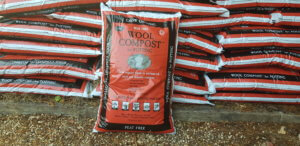
I’m pretty much convinced about the need to avoid using peat based composts. However, I have had problems this year with plants not thriving in peat-free alternatives.
Two weeks ago I attended a talk by Chris Smith of Pennard Plants. He mentioned that he uses Dalefoot Compost for all his nursery plants . When a professional nurseryman says he uses a product and that his plants are thriving, it’s worth considering.
This compost is made in the Lake District from sheep wool and bracken and I remember seeing a fantastic documentary a few years ago showing how it’s made. The wool has good moisture retaining properties and provides nitrogen whilst the bracken provides potash Chris says that whilst most plants in pots need feeding after a couple of months, he has found this compost provides sufficient nutrients for a whole year. Unlike many chunky composts and peat-free alternatives, the texture of Dalefoot compost is free-running and soft.
This week I took delivery of 30 bags of Dalefoot compost. Delivery was arranged direct from the company and I’m lucky to have the space to store it as buying in bulk reduces the cost. Their website also has a list of stockists. This compost is more expensive than many you will find in garden centres but I’m hoping that it is better value for money. If my plants thrive I will certainly consider it so.
This seasonal diary is part of a weekly link-up of garden bloggers from around the world, called Six on Saturday. For more information and links to other blogs crammed with gardening activity, check the blog of host The Propagator.
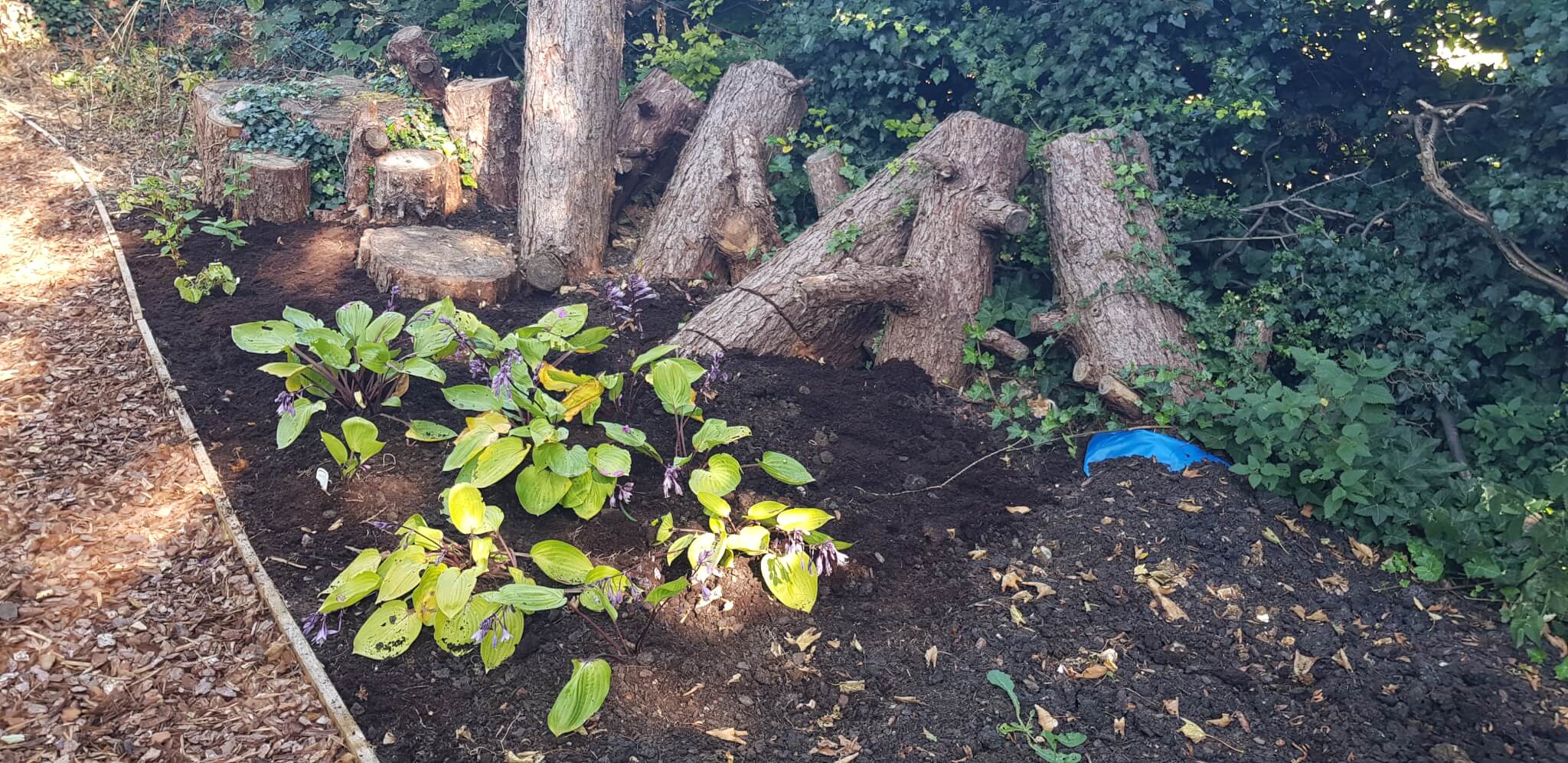
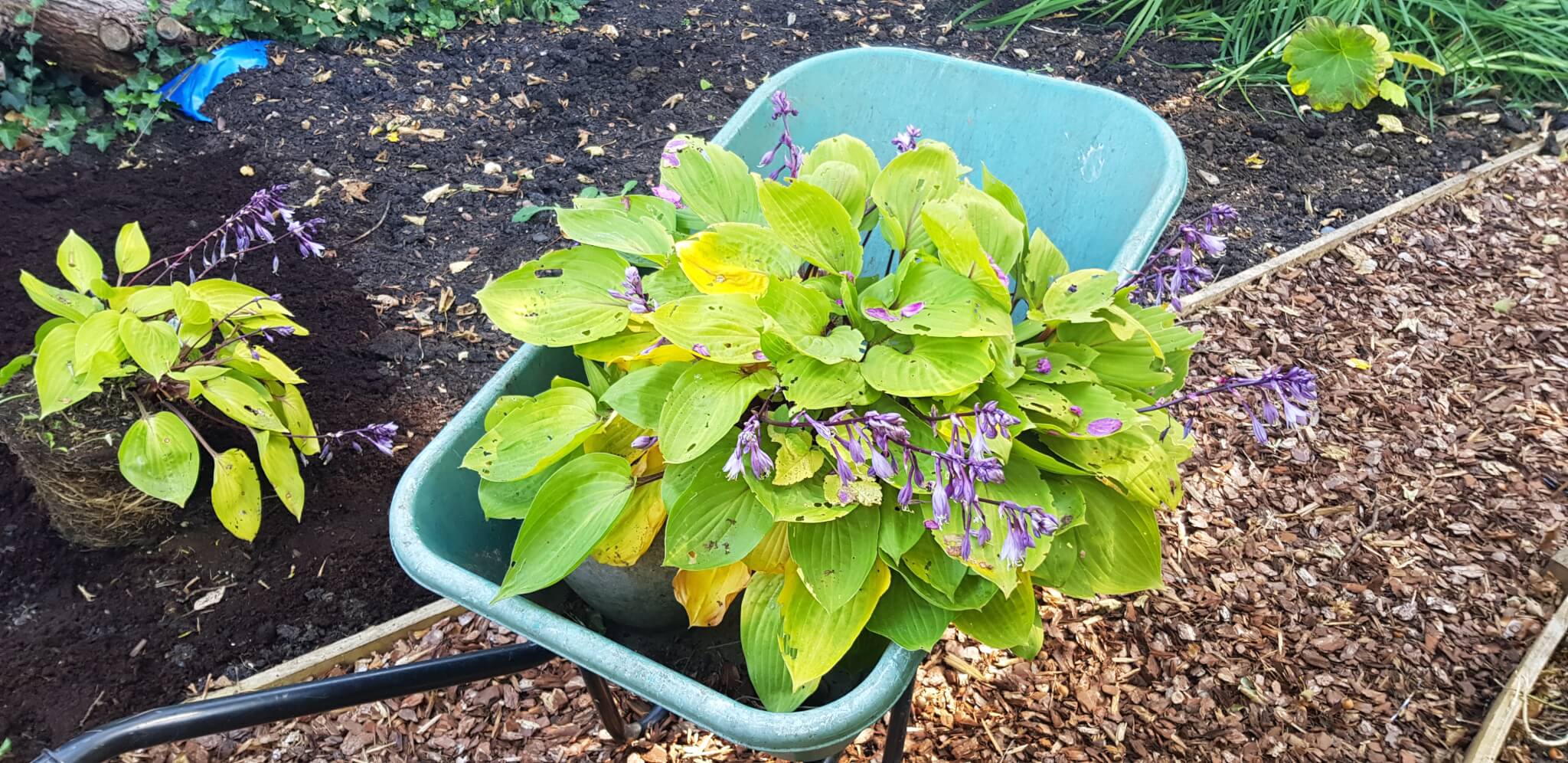

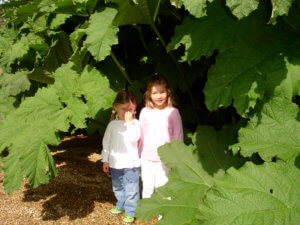
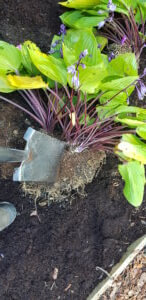
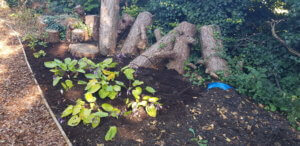
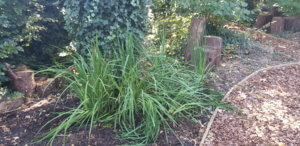
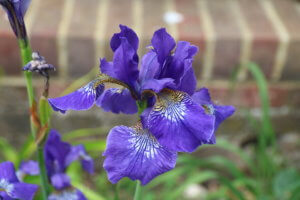
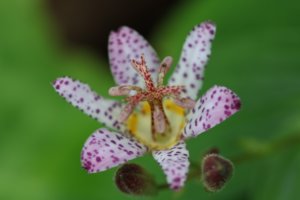
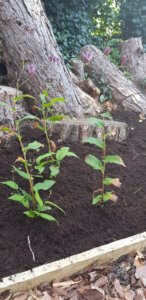
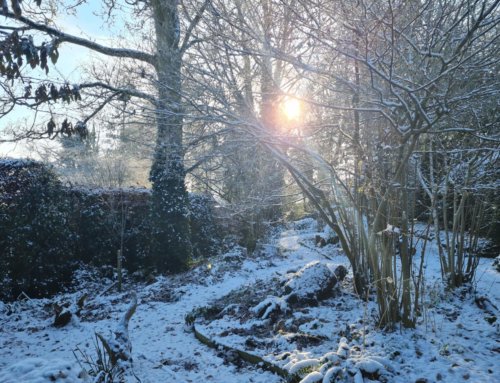
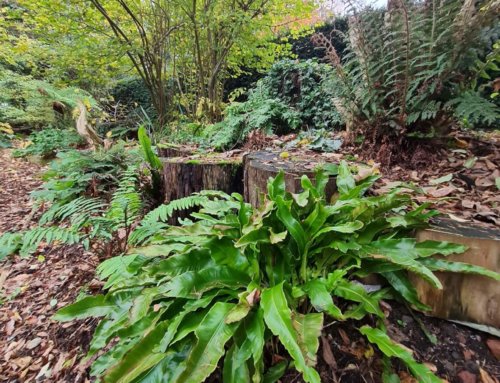
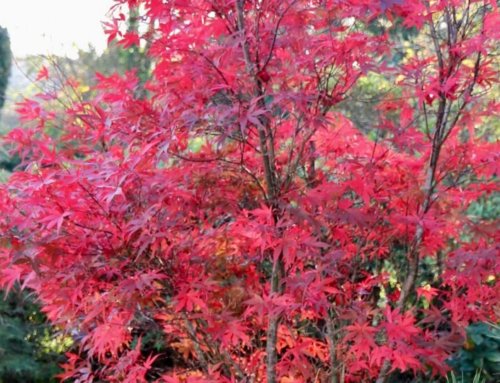
You were right to order your gunnera. I hope your soil humidity calculations are good.
I moved mine that has lost its beautiful size this summer because of the heat and lack of rain, I put a little more in the shade and we will see … I remember the solution of your plastic bag as water / humidity retention, I might do the same thing …
I’m always amazed by you, the English, who have such a variety of compost bags. Few choices here or so it’s for professionals … It’s a shame
Certainly there’s some good innovation around composts here. I guess we’ve had good publicity around the destruction of peat bogs for heating and gardening so many people are keen to find alternatives. I hope your gunnera perks up. Mine have just arrived in the post and are tiny mail-order plants at the moment. Will they grow to be monsters? I hope so!
You must be delighted about the gunnera – your very own jungle. The toad lily might be bomb proof but it’s not Lora proof. Fred advised that mine might’ve been eaten by S&S, so it helps to start them in pots. Next year, next year. It’s the long game, as your shady area attests. I keep looking at Dalefoot & keep being put off by the price. From what you say, it might be worth it for the pots, however. I shall stay tuned for your results.
I promise to keep you informed on the compost Lora and sorry about your toad lily. I always feel awful when I say something’s easy to grow and learn of others’ deceased plants!
I found your post really interesting as I have a similar area to one side of our garden which is wooded with a bark path we made through it. I’m just starting to plant it up, having got some of the areas weed free. I’m putting in some daffodils with the ferns and hostas. I’ve not grown the iris siberica and didn’t realise it could be happy in shade, so that may be a good one for me to add to the list.
I’ve also had problems with peat free composts.I have found them to be very variable even within the same brand. The structure was too loose and woody and more like a mulch. I might try out the Dalefoot compost. It was the price that was putting me off, but I guess you get what you pay for.
Hi Hortus. Lovely to hear we’ve got parallel woodland projects. I too am planting some daffodils. The Iris is fine in part shade but possibly not full shade as this will impact flowering. I have a clump in a similarly spot – shade for some of the day but sunny in the morning. With the compost it’s a tricky thing to balance. It may well be a case of paying up to ensure healthier plants. Having lost a few carefully nurtured seedlings this year I think I will consider the money well spent if the Dalefoot compost ensures healthy plants.
Gunneras are HUGE so I hope you have lots of space there otherwise the other plants might suffer. They are very tropical looking though.
There’s quite allot of space here. It’s wider than it looks in the pictures. Good advice from you – I’ll make sure I don’t plant anything else too close!
I love your posts. Gardening is a wonderful journey and sometimes there’s even an arrival!
You’ve inspired me to think about joining in.
Thank you
Thanks for your lovely feedback Rose. I entreat you to join in!